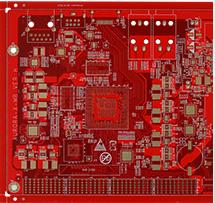With the continuous improvement of electronic communication technology, more and more traditional PCB manufacturing methods are far from being able to meet this high-speed development era. We want to make PCB circuits with high precision, good performance, and cost-saving really fast. This is undoubtedly a big challenge forcircuit design engineers.
One: the method of making circuit boards quickly
There are many ways to manufacture and process circuit boards, but the main manufacturing methods include physical methods and chemical methods:
Physical method: by using various knives and electric tools, manually engrave the copper that is not needed on the circuit board.
Chemical method: By covering the protective layer on the blank copper clad board, the unnecessary copper is etched away in the corrosive solution, which is the method used by most developers at present. There are many ways to cover the protective layer, mainly including the traditional manual painting method, the custom-made self-adhesive method, the film photosensitive method, and the thermal transfer printing PCB method that has only been developed in recent years.

Paint by hand: Use a brush or a hard pen to manually draw the shape of the circuit on the blank copper clad laminate, and then put it into the solution for direct corrosion after it is blow-dried.
Adhesive stickers: There are various stickers on the market that are made into strips and discs. Different stickers can be combined on the blank circuit board according to the needs, and they can be corroded after they are tightly adhered.
Film photosensitive: Print the PCB circuit board diagram on the film through a laser printer, and pre-coat a layer of photosensitive material on the blank copper clad laminate (the coated copper clad laminate is available on the market), and expose, develop, fix and clean in a darkroom environment Then it can be corroded in the solution.
Thermal transfer: Print the circuit directly on the blank circuit board through a thermal transfer printer, and then put it into the corrosive liquid to corrode.
Two: the advantages and disadvantages of the two methods of quickly making circuit boards
Physical method: This method is laborious and has low accuracy. Only relatively simple lines can be used. The main shortcomings are labor-consuming and time-consuming, accuracy is not easy to control, and unrecoverable. It has high requirements for operation, and currently few people have adopted it.
Chemical method: The process is relatively complicated, but the precision is controllable. It is currently a widely used method of rapid plate making, but there are still many problems.
1) Printing accuracy depends on the accuracy of the printer cartridge used. Printers with poor performance print uneven lines, which can easily cause disconnection and adhesion during the corrosion process.
2) The exposure and development time of the photosensitive plate is not easy to control, and the optimal exposure time of each batch of plates will be different, which requires repeated experiments to master.
3) The control of the corrosion process is difficult: it is impossible for a monolithic corrosion board to be equipped with the professional control equipment used by the circuit board factory for mass production, and the temperature, concentration, and pH of the corrosion solution will have a greater impact on the corrosion quality. To do a good job of a circuit board, you must have many experience accumulation. Otherwise, the material scrap will be very serious.
4) The photosensitive plate has high environmental requirements and must be stored in full darkness and low temperature conditions, and the exposure process must also be carried out under darkroom conditions.
5) Silver salt (photosensitive material) and copper salt (corrosion product) are both toxic. Care must be taken during the corrosion process. It is difficult to clean people or clothing when it is stained. Moreover, due to environmental reasons, it is troublesome to dispose of the waste liquid after corrosion.
6) The etched finished board must be worked by hand, and it is difficult to control the accuracy of manual punching.
At present, the circuit board production of electronic digital products, automobiles, medical products, etc. has strict requirements on process and speed. Therefore, as a circuit design engineer, you must have a solid and solid circuit production foundation and skilled Operating skills, and slowly accumulated and summarized.